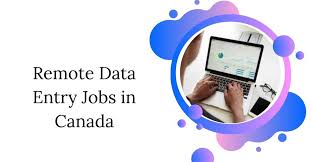Remote Jobs in Canada for Foreigners
Working remotely for Canadian companies is an increasingly realistic and attractive option for professionals around the world. Canada’s tech hubs, startups, and established enterprises routinely hire remote talent, and there’s growing demand for skilled people in software, customer success, design, marketing, product, finance, and more.
This article explains how foreigners can find remote jobs with Canadian employers, what to watch for (taxes, contracts, time zones, payments), how to prepare an application that stands out, and how to thrive once hired.
Why target remote jobs in Canada?
-
Stable, reputable employers. Canada has a large number of well-run companies (both startups and mature firms) with HR practices oriented toward compliance, employee benefits, and remote-work infrastructure.
-
Competitive salaries. Many Canadian remote roles pay well relative to the cost of living in many other countries — particularly for specialized skills like software engineering, cloud devops, data science, cybersecurity, UX/product design, and senior marketing.
-
Professional growth opportunities. Canadian companies often invest in training, mentorship, and career pathways, making remote roles a path to skill-building and promotion.
-
Cultural fit for English/French speakers. If you speak English or French, communication with Canadian teams is smooth; bilingual candidates sometimes open doors to more roles.
-
Remote-first policies. Since the pandemic, many Canadian employers have embraced remote-first hiring, meaning they will consider talent regardless of physical location, provided you can collaborate across time zones.
Who can apply?
Short answer: anyone with the required skills and a good remote-work setup. More detail:
-
No Canadian work permit needed if you will remain outside Canada. If you plan to live and work remotely in your home country while being employed by a Canadian company, most of the time you do not need a Canadian work permit.
However, employment law, tax withholding, and immigration nuances vary by situation — so treat this as a rough rule, not legal advice.
-
If you plan to live in Canada or move there, you may need an appropriate visa or work permit. Many remote roles do not sponsor relocation; some larger firms may support work-visa processes for senior or hard-to-find talent, but sponsorship is less common for junior roles.
-
Freelance/contract roles are often open to foreigners. Companies may prefer hiring contractors (1099-style) or using an Employer of Record (EOR) to manage compliance when hiring internationally.
Practical takeaway: apply to roles that explicitly state “remote” and “worldwide” or list international hiring options. If unsure, ask in the interview about employment status (employee vs contractor), taxes, and benefits.
Types of remote jobs commonly offered by Canadian employers
-
Software engineering & development (full-stack, backend, frontend, mobile, cloud)
-
Data roles (data engineer, data scientist, analytics)
-
Product & UX (product managers, designers, UX researchers)
-
DevOps / SRE / Cloud infrastructure
-
Marketing (content, growth, digital marketing, SEO)
-
Sales / Business development / Account management
-
Customer support / Success
-
Finance & accounting (especially for fintech and scaleups)
-
HR / People operations / Recruiting
-
Creative roles (motion graphics, video editors, copywriting)
Some roles are strictly remote; others are “remote-first” but may require occasional travel to a Canadian office for onboarding or team events.
Where to find remote jobs in Canada (high-signal places)
-
LinkedIn — filter for “Remote” and location “Canada” or “Worldwide”; follow Canadian companies you like.
-
Indeed / Glassdoor — use “remote” keyword and filter company location.
-
Remote-specific job boards — examples: We Work Remotely, Remote.co, Remote OK, FlexJobs. Many Canadian companies advertise there.
-
Tech community boards — GitHub Jobs (historically), Stack Overflow Jobs, AngelList (for startups).
-
Freelance marketplaces — Upwork, Fiverr, Toptal (good path for contractors/freelancers).
-
Company websites & careers pages — identify companies you want to work for and monitor their openings.
-
Twitter/X and Mastodon — follow hiring hashtags like #hiring, #remote, and Canadian tech accounts.
-
Local tech communities and meetups — many Canadian meetups post remote positions.
-
Recruiters & staffing agencies — some agencies specialize in international remote placements.
How Canadian employers typically hire foreigners
-
Application → Screening: online application with resume and cover letter. Many remote roles value work samples and GitHub/portfolio links.
-
Initial interview: phone or video call to assess fit and basic skills.
-
Technical assessment or take-home test: common for engineering and design roles.
-
Panel interviews: cross-functional interviews with product, engineering, and people ops.
-
Offer & paperwork: employer clarifies whether they’ll hire you as an employee, contractor, or through an Employer of Record (EOR). This is the stage to address taxes, payment method, and benefits.
Tip: be explicit in interviews about your location, timezone, and whether you’ll be an employee or contractor. Good employers appreciate transparency.
Contracts, taxes, and payment: what to watch for
-
Employee vs Contractor: Employees usually enjoy benefits and employer-side tax withholding; contractors handle their own taxes and benefits. Canadian employers sometimes prefer contractors for international hires because it reduces payroll complexity.
-
Payroll & Employer of Record (EOR): Some companies use an EOR (third-party service) to hire you as a local employee in your country — this simplifies compliance for the employer and gives you clearer employment terms.
-
Tax residency: Your tax obligations depend on where you live and your country’s rules. Generally, if you reside and work in Country A, you pay taxes there — but double taxation treaties, withholding rules, and remote-work nuances mean this is complex. Always consult a tax professional.
-
Payment methods: Many companies pay via direct deposit (if you have a local bank account), international wire transfer, PayPal, Wise (formerly TransferWise), or via contractor platforms. Discuss currency, fees, and frequency up front.
-
Intellectual property & NDAs: Expect IP assignment clauses and confidentiality agreements. Review them carefully, especially if you plan to use your work for a public portfolio.
-
Benefits: If hired as an employee, ask about health insurance, paid time off, retirement plans, and whether benefits extend to remote international hires.
How to craft an application that stands out
-
Tailor your resume and cover letter. Highlight remote work experience (tools used, how you handled time zones, communication style). Use accomplishments with quantifiable impact.
-
Show remote-friendly habits. Mention async communication, documentation, dependency management, and examples of working across time zones.
-
Build a targeted portfolio. For engineers, include GitHub repos and deployed projects. For designers, case studies showcasing problem, process, and outcome are gold.
-
Provide references who can vouch for your remote performance. Former managers or teammates who can speak to your collaboration are valuable.
-
Emphasize collaboration tools familiarity. Slack, Notion, Jira, Git, Figma, Zoom — name the ones you’ve used and how.
-
Follow up politely. An informed follow-up message that references a specific part of the job posting or company product shows attention to detail.
Interview tips for remote Canadian roles
-
Be punctual and prepared. Technical setup (camera, microphone, internet) should be solid; test before interviews.
-
Show you can communicate asynchronously. Demonstrate how you document work, hand off tasks, and keep teams informed without constant meetings.
-
Be explicit about availability. Explain your working hours and how you’ll overlap with Canadian time zones. Employers appreciate clarity.
-
Bring examples. For technical interviews, walk through your code. For product/design roles, present a concise case study with metrics.
-
Ask about onboarding and travel expectations. Some companies require in-person onboarding or yearly meetups — clarify this to avoid surprises.
-
Discuss compliance early. Ask whether the company will hire you as an employee, contractor, or use an EOR — this will determine many downstream logistics.
Negotiating salary and benefits remotely
-
Know market rates. Salaries vary widely by role and seniority. Where possible, research suggested ranges for Canadian roles and adjust for your cost of living and expertise.
-
Negotiate total compensation, not just salary. Consider bonuses, equity (if offered), vacation days, training budgets, and equipment allowances.
-
Currency clarity. Confirm whether compensation is in CAD, USD, or another currency, and who bears exchange fees.
-
Request written confirmation. For contractors, get scope, deliverables, payment schedule, and termination conditions in writing.
Managing time zones and remote collaboration
-
Set overlap windows. If you live many hours away, agree on core overlap hours to attend meetings and sync with the team.
-
Leverage async communication. Use clear status updates, recorded demos, and documented decisions to reduce synchronous meeting burden.
-
Respect local holidays and be transparent about your availability. This helps planning and avoids misunderstandings.
-
Use project management tools effectively. Keep tickets, docs, and roadmaps current so colleagues can pick up context independently.
Common challenges and how to solve them
-
Challenge: Payment delays or high transfer fees.
Fix: Negotiate payment method (Wise, Payoneer), get clear payment terms, and confirm who pays transfer fees. -
Challenge: Confusion over employee vs contractor status.
Fix: Ask HR for an explicit contract that spells out status, taxes, benefits, and termination clauses. -
Challenge: Isolation and time-zone friction.
Fix: Schedule regular 1:1s, join social channels, and share occasional overlap hours for touchpoints. -
Challenge: Legal/tax uncertainty.
Fix: Consult a local tax advisor or international payroll specialist before accepting long-term contracts.
Sample remote job search plan (30-day sprint)
-
Days 1–3: Update resume, LinkedIn, and portfolio with remote experience and tools.
-
Days 4–10: Apply to 2–3 tailored positions per day on LinkedIn, company sites, and remote job boards.
-
Days 11–18: Complete tests, prepare for interviews, and line up references.
-
Days 19–25: Interview phase — practice with mock interviews, focus on async collaboration examples.
-
Days 26–30: Negotiate offers, confirm contract terms, and plan onboarding logistics.
Realistic expectations
-
Competition is global. You’re up against applicants from many countries; demonstrate unique value.
-
Not all roles are open to international hires. Some positions require local hiring for legal or tax reasons.
-
Offers may favor contractors. Expect that many employers will offer contractor terms rather than full employment — that’s not bad, but understand the implications.
Final tips and checklist before you accept a remote Canadian job
-
Confirm: employee vs contractor vs EOR.
-
Clarify currency, payment method, and payment schedule.
-
Ask about benefits and whether they apply to international hires.
-
Review IP, NDAs, and non-compete clauses with care.
-
Confirm expected overlap hours and travel requirements.
-
Talk to a tax advisor if the contract is long-term or high-paying.
FAQ
Q: Will I need a Canadian visa to work remotely for a Canadian company?
A: If you remain physically outside Canada, most remote workers do not need a Canadian work permit — but this depends on exact job duties and employer policies. If you plan to move to Canada, you’ll need the appropriate work permit or immigration pathway.
Q: How do companies pay international remote workers?
A: Typical methods include wire transfer, PayPal, Wise, Payoneer, or payroll via an EOR. Confirm fees and currency in advance.
Q: Are remote Canadian jobs well paid?
A: Many are competitive, especially in tech and specialized fields. Compensation depends on the role, seniority, and whether you’re classified as contractor or employee.
Q: Can remote work lead to permanent relocation in Canada?
A: Sometimes. A long-term remote relationship might evolve into relocation if the employer is willing to sponsor a work permit — but sponsorship is not automatic.
Conclusion
Remote jobs with Canadian companies are an excellent opportunity for skilled foreigners who can communicate well, work asynchronously, and demonstrate strong measurable results.
The path requires clear communication about employment status, taxes, and payments, and it rewards preparation: a tailored resume, proven remote habits, and a portfolio that shows impact.
Be proactive, protect yourself contractually, and treat the hiring process like you would for any high-value remote role — and you’ll increase your odds of landing a great Canadian remote position.










